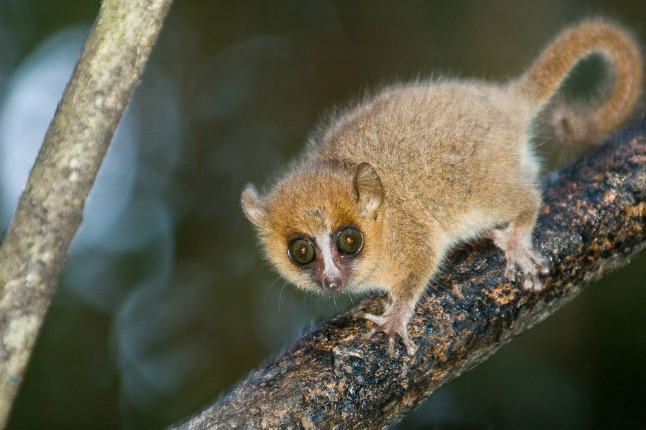New Tiny (And Cute) Lemur Species Found In Madagascar
It's a sad era for conservation when scientists find new species only to realize they are already endangered. This was the case in the recently discovery of two new species of mouse lemur by scientists at Duke University in Durham, North Carolina, and the University of Antananarivo in Madagascar.
The animals bring the total number of mouse lemur species to 20. However, due to habitat destruction, researchers have already classified one of the animals as endangered.
Mouse lemurs are the smallest primates in the world. They weigh less than a quarter of a pound and are barely longer than 11 inches from head to tail. They live in forests of Madagascar, where they come out at night to feed on fruits and insects.
The mouse lemur has the most diverse genus of any primate group. Eighteen new species have been discovered since 1993, but because they look so similar, telling the animals apart can only be done through genetic analysis.
The animals were captured by Rodin Rasoloarison from the University of Antananarivo while on field trips to the Forêt de Marohita in eastern Madagascar and the Forêt de Manantantely and Forêt d'Ivorona in the Anosy region. After completing a morphological analysis—including taking the animals' weight, measuring their external and internal parts and identifying their fur colors with color charts— Rasoloarison extracted tissue samples and sent them to Anne Yoder and Dave Weisrock at Duke University in Durham, North Carolina, for analysis.
After running numerous tests, the researchers at Duke confirmed two new species. The team named the lemurs after the forests where they were found.
With a weight around three ounces, the body mass of the Marohita mouse lemur is "remarkable," according to the team report in the newest issue of the International Journal of Primatology. It is the largest of any known mouse lemur. The animal has long, dense fur in colors ranging from ginger to dusty umber with a black-grey underfur. The animal was classified as endangered because the Marohita Forest is "highly degraded" by ongoing habitat destruction, according to the report.
The Anosy mouse lemur is also relatively large, and has a rusty-coloured coat with darker coloring on its underside. Although its status is not known, researchers say it will likely also be classified as endangered due to environmental degradation.
